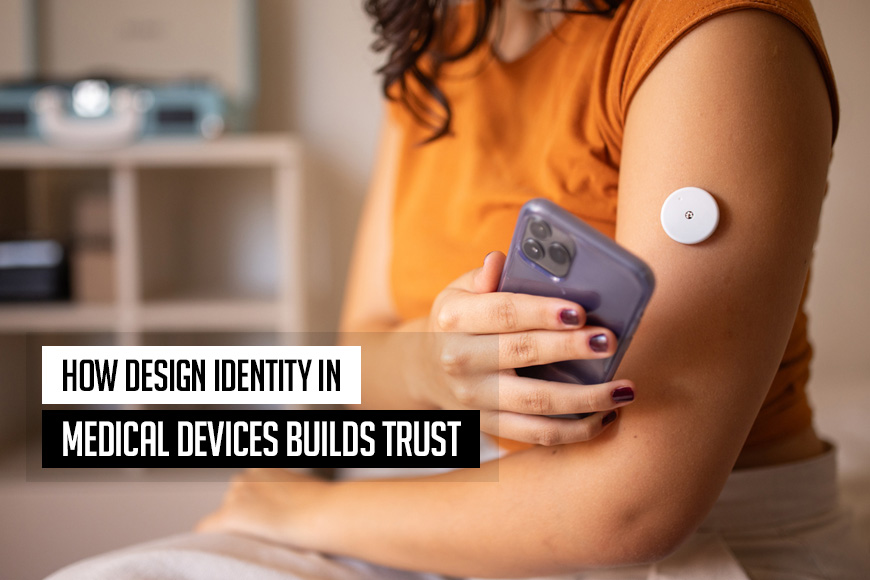Design identity shapes how patients and healthcare professionals perceive medical devices. Colors, shapes, technical aspects, and testing influence trust in high-stakes environments where reliability is paramount.
A well-designed device signals safety and competence, while a poor design can raise doubts about quality. In healthcare, where decisions impact lives, the functional design of medical devices plays a critical role in instilling confidence.
In this article, we explore how intentional design builds trust and why it matters now more than ever.
Rising Expectations for Medical Device Design
As medical technology advances, the demand for user-friendly, trustworthy devices grows. Patients and providers rely on design signals to assess a device’s credibility before use.
According to McKinsey, how a product is designed and packaged affects its growth, profit margin, and sustainability. Device appearance and design also matter when evaluating products designed in the healthcare industry. These first impressions, driven by design, set the tone for trust.
Understanding this dynamic is essential for manufacturers aiming to meet rising expectations.
Psychology of Design in Medical Devices
Design identity taps into subconscious associations that shape perceptions of safety and reliability. Clean lines, soft colors, and intuitive interfaces suggest precision and care, qualities patients and clinicians value.
These elements create an emotional connection, strengthening trust in high-pressure settings.
Color psychology also plays a role in design. Blue, often used in medical device branding, evokes calmness and professionalism, while chaotic or clashing colors can signal unreliability.
Typography matters too. Clear, legible fonts convey transparency, while overly stylized ones may confuse users. When design aligns with user expectations, it reduces anxiety and builds confidence. Manufacturers who prioritize these principles create devices that feel instinctively trustworthy.
Transitioning from psychology to real-world impact, design flaws can have serious consequences.
When Design Fails: High Cost of Mistrust

Inconsistent or unclear design can erode trust, leading to skepticism about a device’s safety. For instance, mismatched branding across a product line can confuse clinicians, raising doubts about quality control. Such missteps not only harm reputations but also risk patient safety.
Historical examples underscore this point. According to the FDA, in 2024, a popular insulin pump was recalled due to a malfunctioning design. These cases show how design oversights, whether in aesthetics or functionality, can trigger mistrust. Addressing these risks requires balancing innovation with clear communication.
Moving from failures to legal implications, some cases reveal how design and transparency intersect. Recent lawsuits illustrate the stakes when trust breaks down.
Fine Line Between Innovation and Oversight

Innovation drives medical device development, but oversight in design and communication can undermine progress.
Recent cases, such as the Bard PowerPort lawsuit, have raised questions about patient safety and product transparency. It talks about an implantable catheter device that has resulted in serious health complications like infections and fractures.
TorHoerman Law notes that this is a clear case of defective design, where the manufacturers and designers are liable.
Companies must ensure that innovative features are matched by transparent, user-focused design. This balance is critical to maintaining public confidence.
Shifting from challenges to solutions, intentional design offers a path forward. Practical strategies can help manufacturers rebuild and sustain trust.
Building Trust Through Intentional Design

Clarity is the cornerstone of trustworthy design. Devices should feature intuitive interfaces, legible fonts, and consistent color schemes to guide users effectively. Clear design not only enhances usability but also signals a commitment to safety.
Consistency across branding strengthens trust. Uniform logos, colors, and packaging reassure users that a device meets rigorous standards. Transparency is equally vital. Clear labeling and accessible instructions empower patients and clinicians.
These principles, clarity, consistency, and transparency, form the foundation of a design identity that inspires confidence.
Engaging users early in the design process also helps. Forbes notes that companies can conduct A/B testing of their design concepts and get real-time feedback from their customers.
This applies to medical devices too, as incorporating feedback from patients and clinicians ensures devices meet real-world needs. By prioritizing these strategies, manufacturers can create products that resonate with users and withstand scrutiny.
Design as a Silent Communicator

Design identity in medical devices does more than enhance aesthetics. It communicates reliability, safety, and accountability. Thoughtful and intentional design builds trust by aligning with user expectations and reducing uncertainty in high-stakes settings.
As patient and clinician demands evolve, manufacturers must prioritize clarity, consistency, and transparency to maintain confidence.
In a sector where trust is critical, design serves as a silent yet powerful communicator, shaping perceptions and outcomes for years to come.
(Visited 15 times, 9 visits today)

